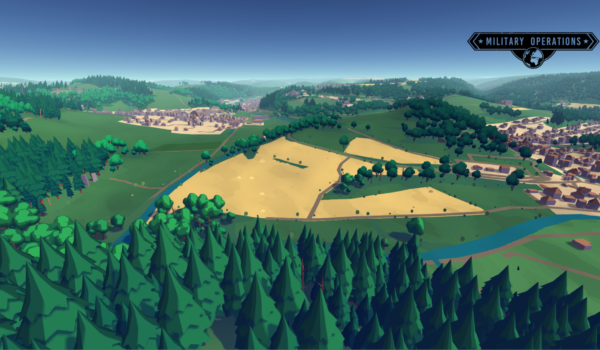

Introduction
Some observations about NPC behaviour while playing games:
Every gamer can list at least a dozen similar situations that are annoying and can spoil the fun.
What went wrong? Game A.I. wasn’t designed to simulate believable human behaviour but rather a perfect emotionless automaton.
Game design
A big general design rule, for us in the development of Military Operations, is to design in big numbers and aim for emergent behaviour rather than complex designs that try to cover every contingency separately.
It requires applying only indirect control, which comes with its own challenges, but when done right provides a wealth of behaviour.
Much like modelling a flock of birds by having simple behaviour for each individual bird in stead of trying to come up with one complex system that describes flocking as a whole.
So instead of designing complex, top level, purpose-build behaviour, give each unit a set of basic behaviours that it selects from when responding to environment conditions.
A.I. design
One area we spend much time on before starting development of Military Operation was A.I. Not path-finding or obstacle-avoidance but rather simulating human behaviour. The result was the following premise:

Create an A.I. in three steps:
The environment
This environment is a description of what a unit perceives from the perspective of an A.I. agent. This description enables it to distinctly pick the most appropriate conclusion.
Sensors
For this A.I. we only use vision and hearing.
The brain
The brain (cortex) is implemented using a neural-network topology that is capable of “recording associations” by using the input the sensors pick up from the environment. The output of this brain are the conclusions we talked about earlier. These conclusions will result in actions that alter the environment.
Actions
In Military Operations, every action consists of a movement to some location. Meanwhile, the local environment for a unit dictates what reaction is triggered. A perfect battle would be one that is won solely by manoeuvring without firing a single shot.
A simplified example: A unit’s conclusion is “attack”. the action could be “move toward the nearest detected enemy”. Once the unit is in firing range of the enemy, firing is triggered. Meanwhile the unit can at any time change its conclusion causing it to move to a different location. For example, during battle the conclusion changes to “retreat”. The new position to move towards could be “the nearest allied unit” or “away from the nearest enemy”.
Benefits
The biggest problem with purpose build A.I. is that it only covered situations that the A.I. was explicitly designed for. Which is a lot of work and will never be complete.
Contrary to traditional A.I. approaches, our approach has the following advantages:
Due to the large number of units in Military Operations, a simple set of conclusions and companying actions, can result in realistic emergent behaviour. Combined with simulations for important facets of battle like communications, logistics, military hierarchy and supplies gives a much more complete model of warfare.
Comments and reactions to this blog entry can be made on our forum.
Share: